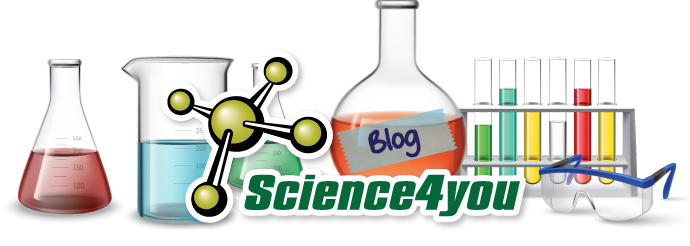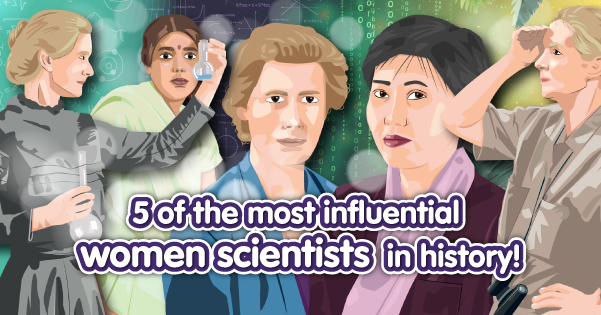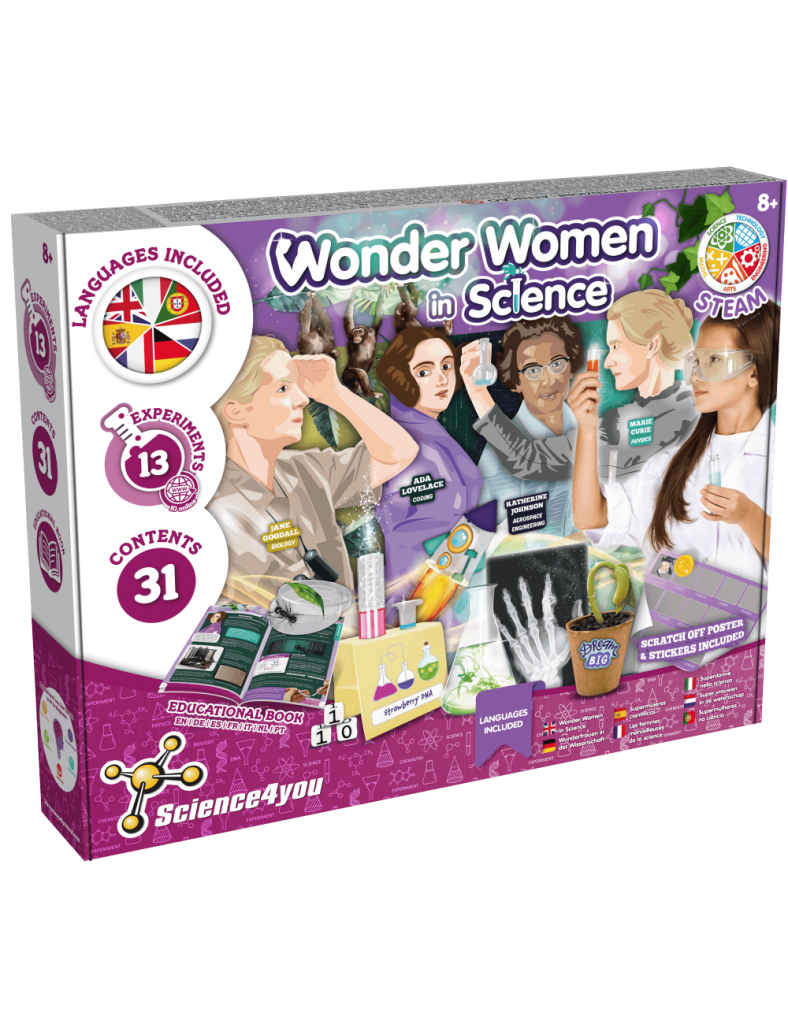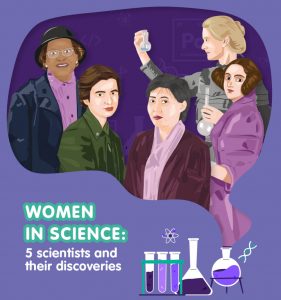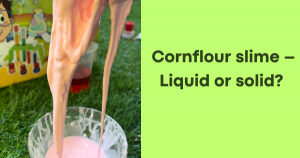March 8th is International Women’s Day and, at Science4you, we want to celebrate this date by letting you know a little more about some of the most influential women in the History of Science.
Throughout the centuries, women had to be brave and determined to follow their dreams and succeed in areas dominated by men. Their efforts were successful and their discoveries continue to have an impact today.
Marie Curie – Discovered radiation and two of the elements in the periodic table

Marie has always shown a bright and inquisitive mind. When uranium salts were discovered to give off a mysterious glow, Marie and Pierre (her husband and lab partner) became curious and began to study the phenomenon. They concluded that the energy causing the radiation came from the uranium atom.
Nowadays, we know that atoms with an unstable nucleus emit particles and release energy. Marie called this phenomenon “Radioactivity”. This was a discovery with a giant impact!
To determine the source of the radioactivity, Marie and Pierre ground and filtered other radioactive materials. In the process, they discovered two totally unknown chemical elements, even more radioactive than uranium. They decide to call the first Polonium (in honour of Poland) and the second Radium (which means “ray” in Latin). Meanwhile, Marie and Pierre began to realize that they were getting sick: prolonged exposure to radiation was leaving them both tired and in pain. For the love of their work, they both continued to work tirelessly, receiving the Nobel Prize in Physics for the discovery of radioactivity.
Jane Goodall – Primate expert and wildlife protection activist
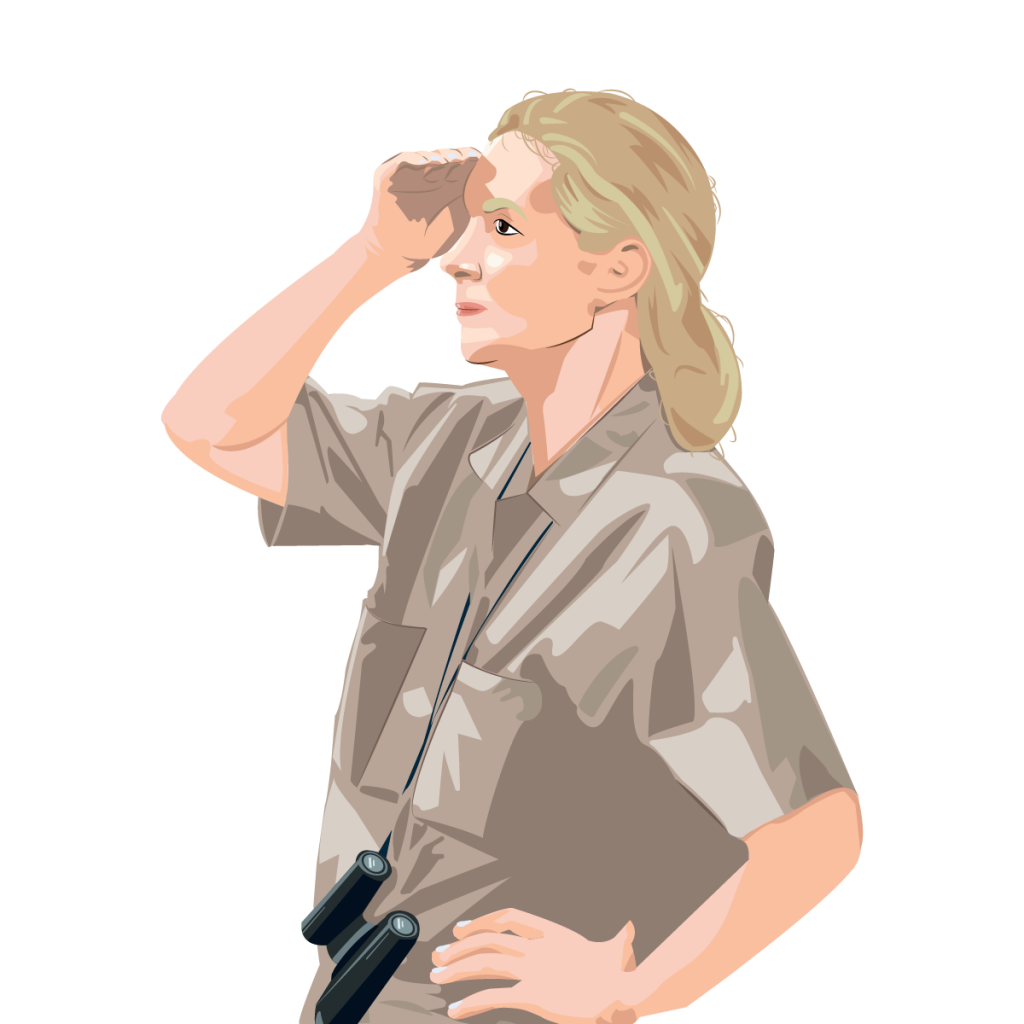
Jane was born in England. Inspired by the book “Tarzan, the King of the Jungle”, she used to say that she would go to Africa to study wildlife since she was a little girl. However, she did not have the means to finance her studies. She worked hard to go to Kenya, even though she was told that the journey was too dangerous for a woman.
There, she met a scientist who, impressed by her knowledge of primates, hired her to study wild chimpanzees, which until then had been a mystery.
Initially, the chimpanzees did not trust Jane because, according to her, “they had never seen a white monkey”. However, after some time and a lot of perseverance, Jane gained their complete trust and could document behaviours that had never been observed before.
Until then, it was believed that humans were the only species that knew how to use tools. Jane observed that chimpanzees choose and optimized thin and flexible branches to collect ants from anthills, proving the opposite.
After being funded by the National Geographic Society and being featured in its documentaries, Jane showed the world that chimpanzees have unique personalities and live in complex social hierarchies, being capable of feeling compassion and cruelty.
Jane is also an incredible activist for the conservation of chimpanzees and wildlife in general, having created several institutions and programs for this purpose. Jane is currently working with the United Nations for World Peace.
You can find out more about Jane on her website;
Flossie Wong-Staal – Scientist who cloned and deciphered the genes of the AIDS virus
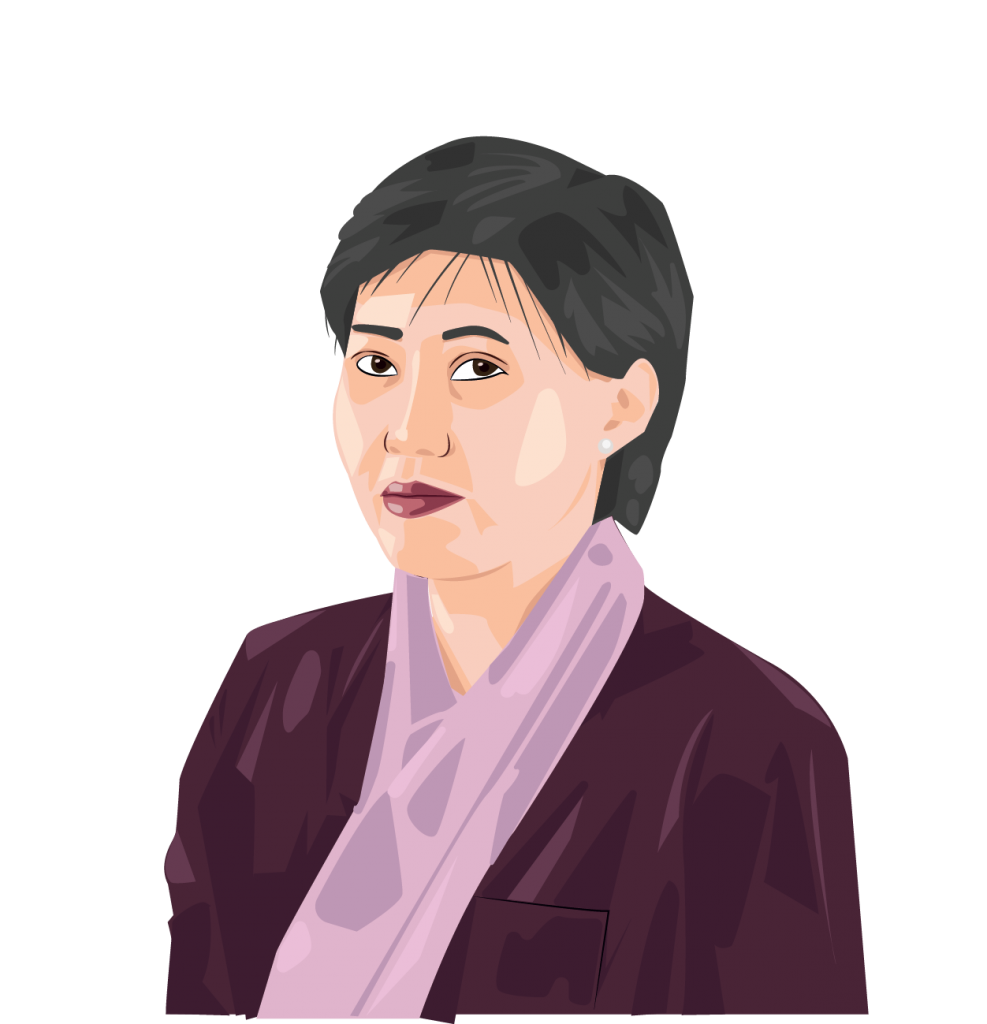
Flossie was born in China and was the first woman in her family to receive a higher education. At the age of 18, she left Hong Kong to study bacteriology in the US.
After finishing her PhD, Flossie began to study retroviruses. Shortly thereafter, she made an incredible achievement: she managed, for the first time, to clone the human immunodeficiency virus (HIV)! She was also able to complete the genetic map of this organism. These developments made it possible to prove that HIV causes acquired immunodeficiency syndrome (AIDS). It also allowed the development of diagnostic tests for this disease using blood samples.
Flossie was later nominated president of the Center for AIDS Research and vice president of a pharmaceutical company.
Inge Lehmann – Discovered that the Earth has a solid core
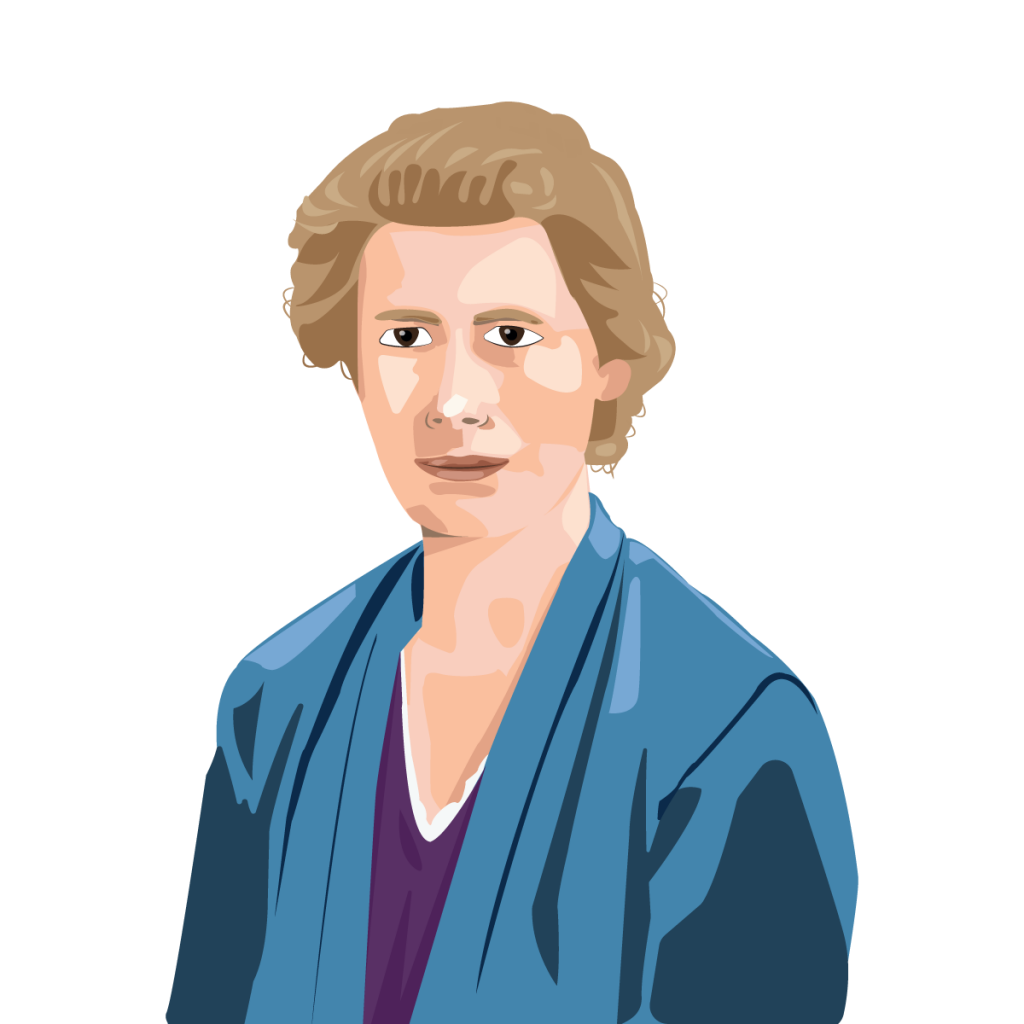
Inge was a Danish seismologist who, through the analysis of seismic waves, realized that the Earth has a solid inner layer, not being homogeneously liquid as thought.
Inge Lehmann is also remarkable in that she is one of the longest lived scientists in history, living to 104 years.
Janaki Ammal – Pioneer in botany, created a new species of magnolia
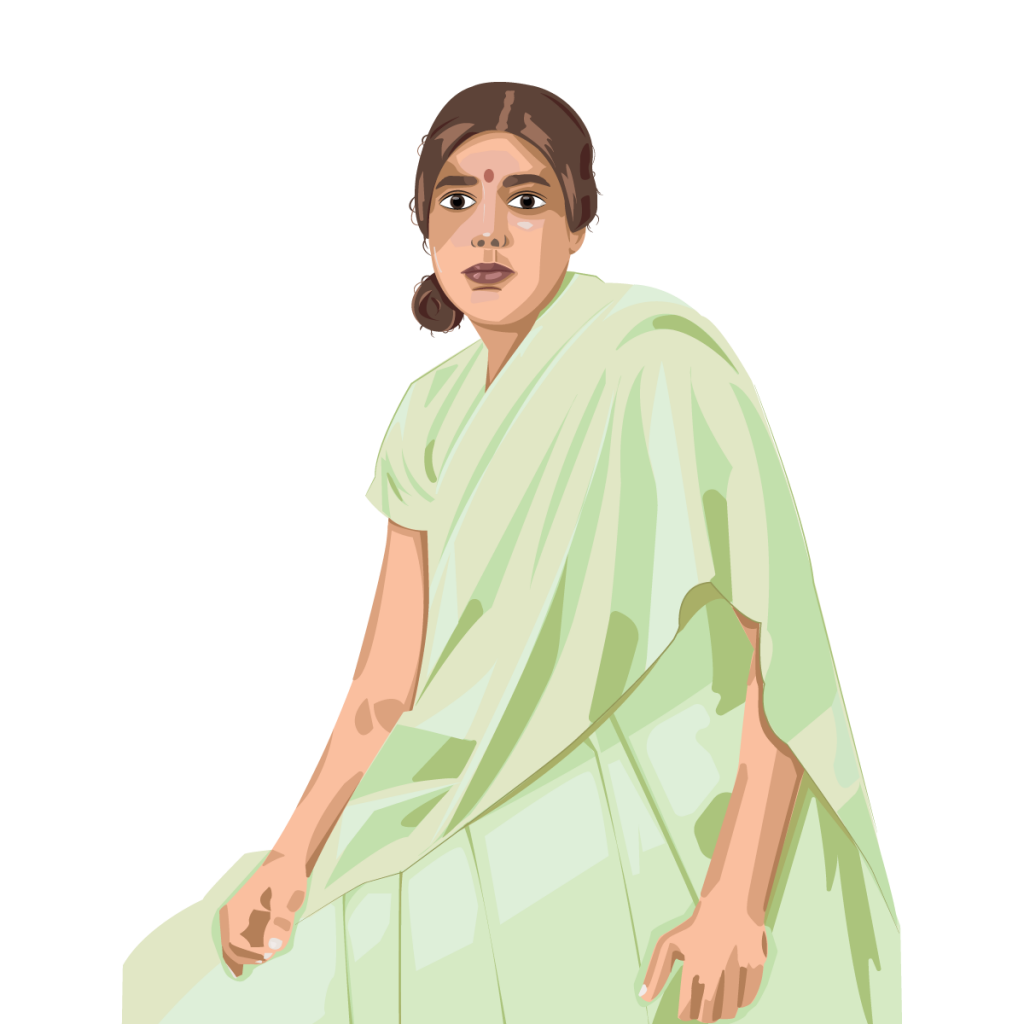
Janaki was born into a large family and decided quite early on that she wanted to be a scientist. She started by working in India, where she was discriminated against for belonging to a “lower caste” and being a single woman.
She lived in the United States of America (USA), where she specialized in crossing plants of different species and varieties. With this type of crosses, she managed to make a variety of sugar cane typical from India sweeter! This has meant that her country could stop importing exotic species and switch to using a native plant that was more sustainable in the local climate.
She later moved to the UK and focused on plant cytogenetics, the study of plant chromosomes.
Janaki studied the uses of colchicine, a substance that can double the number of chromosomes in a plant, resulting in gigantic varieties! One of the results of her investigation was a new species of Magnolia that was named after her (Magnolia kobus ‘Janaki Ammal’). During her studies, Janaki planted some of these specimens in Wisley’s garden, which are still there today!
After returning to India at the prime minister’s request, Janaki began using her influence to protect endangered native plants. During the last years of her life, she joined the environmental movement that managed to avoid flooding the forests of the Silent Valley National Park.
—
If you like science and experimentation and want to know more about these and other women in science, we have the perfect proposal for you: Wonder Woman – Women in Science, one of the latest toys from Science4you.
